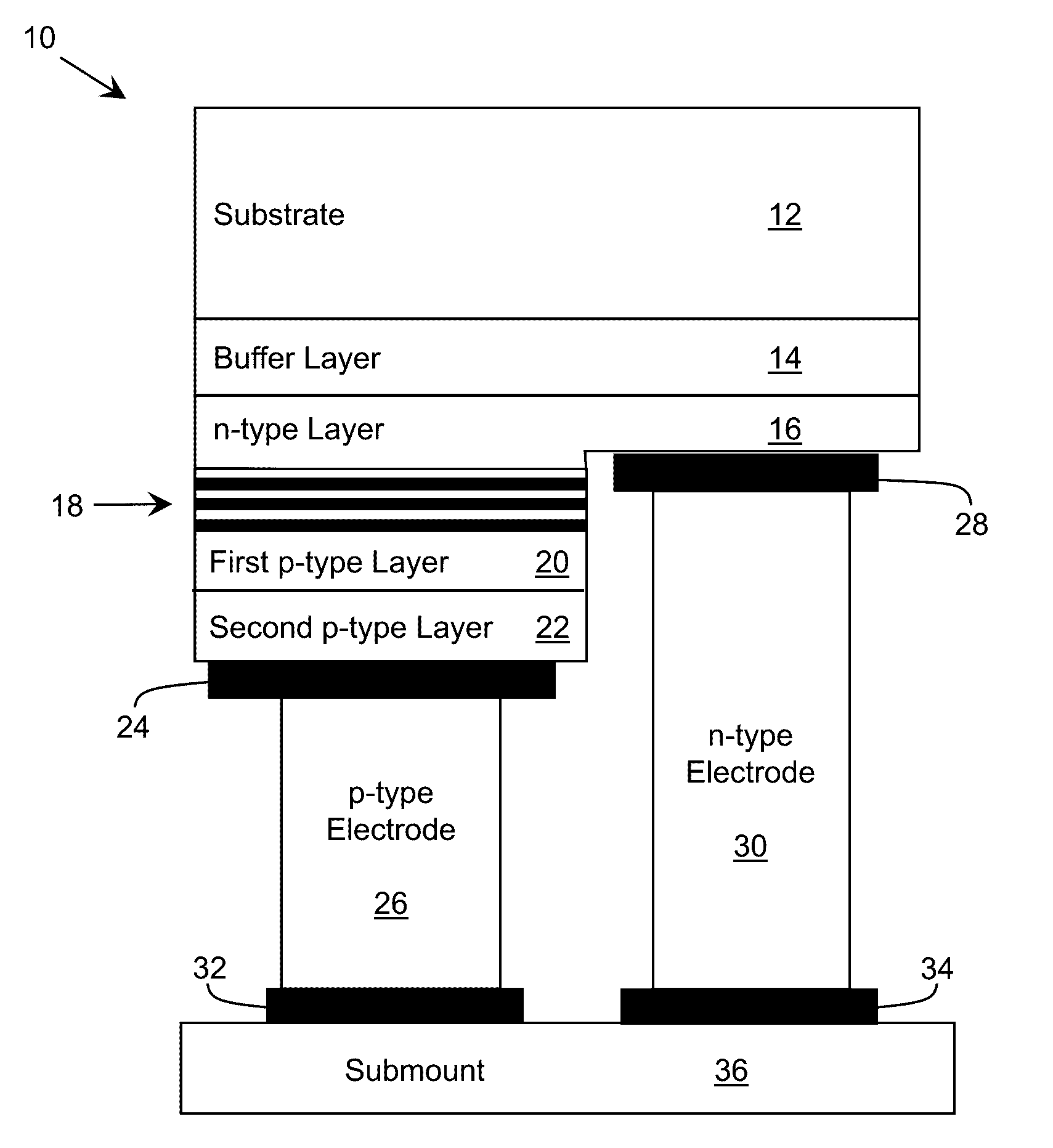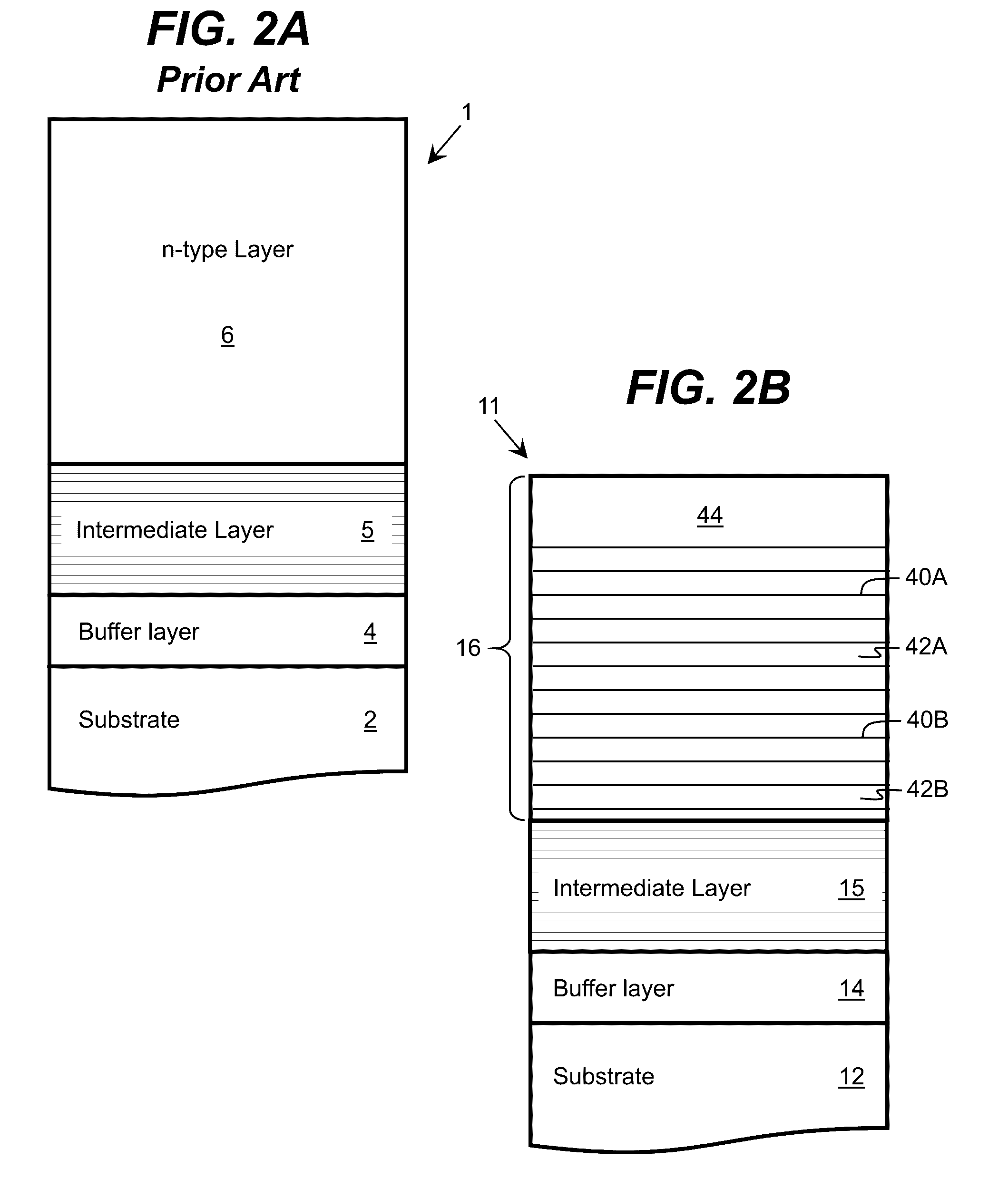Semiconductor heterostructure with stress management
a heterostructure and stress management technology, applied in the field of semiconductor heterostructures, can solve the problems of high crystal quality growth of group iii nitride devices, difficult growth of sapphire, silicon carbide (sic) and silicon, and low overall efficiency of these devices, so as to reduce internal stresses and reduce the effect of wafer bowing
- Summary
- Abstract
- Description
- Claims
- Application Information
AI Technical Summary
Benefits of technology
Problems solved by technology
Method used
Image
Examples
Embodiment Construction
[0027]As indicated above, aspects of the invention provide a heterostructure for use in fabricating an optoelectronic device. The heterostructure includes a layer, such as an n-type contact or cladding layer, that includes thin sub-layers inserted therein. The thin sub-layers can be spaced throughout the layer and separated by intervening sub-layers fabricated of the material for the layer. The thin sub-layers can have a distinct composition from the intervening sub-layers, which alters stresses present during growth of the heterostructure. The layer can be configured to control stresses present during growth of the heterostructure. To this extent, the thin sub-layers can be configured to reduce internal stresses and / or wafer bowing. As used herein, unless otherwise noted, the term “set” means one or more (i.e., at least one) and the phrase “any solution” means any now known or later developed solution.
[0028]The present technique may be combined with the technique of growth of a buf...
PUM
| Property | Measurement | Unit |
|---|---|---|
| thickness | aaaaa | aaaaa |
| thickness | aaaaa | aaaaa |
| thickness | aaaaa | aaaaa |
Abstract
Description
Claims
Application Information
 Login to View More
Login to View More - Generate Ideas
- Intellectual Property
- Life Sciences
- Materials
- Tech Scout
- Unparalleled Data Quality
- Higher Quality Content
- 60% Fewer Hallucinations
Browse by: Latest US Patents, China's latest patents, Technical Efficacy Thesaurus, Application Domain, Technology Topic, Popular Technical Reports.
© 2025 PatSnap. All rights reserved.Legal|Privacy policy|Modern Slavery Act Transparency Statement|Sitemap|About US| Contact US: help@patsnap.com



